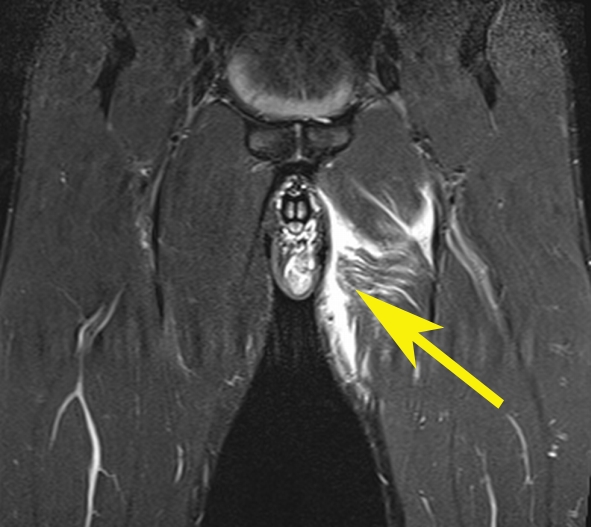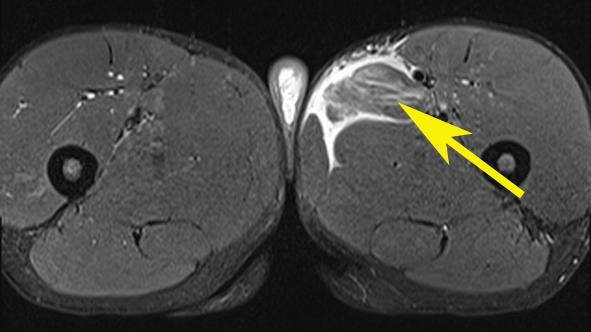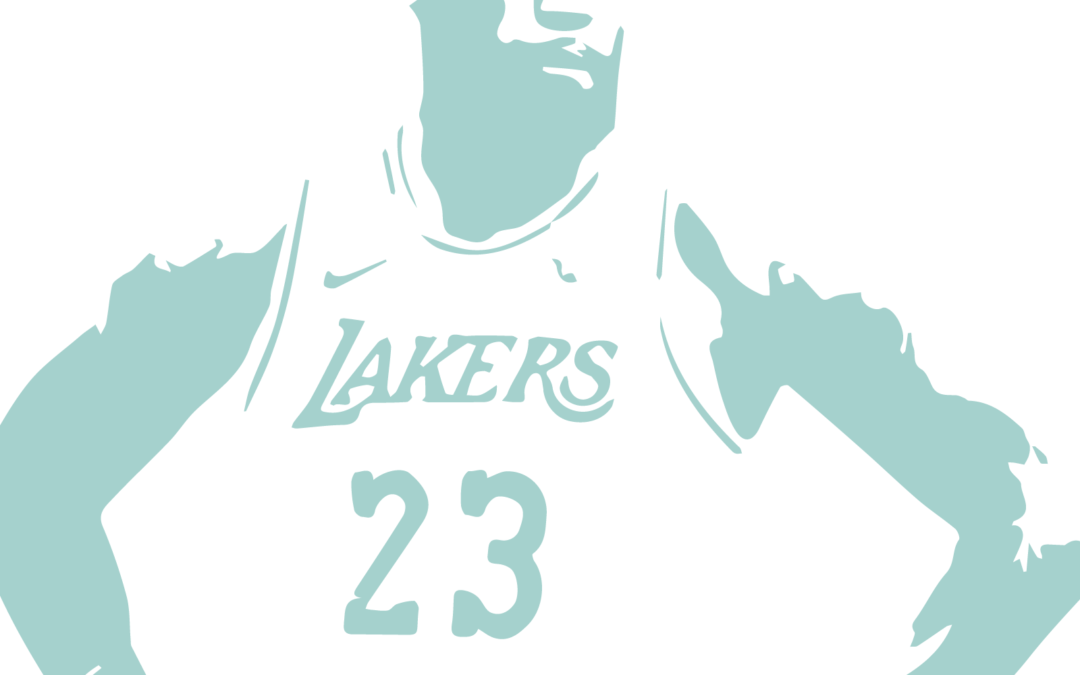Injuries to the groin (the muscles on the inside of the thigh) are very common in sports, especially those that involve stopping and starting, or repetitive leg movements. The most common groin injuries are strains, but more severe injuries can also involve damage to the thigh bone or pubic bone, where the muscles are anchored.
LeBron James, three-time NBA champion and one of basketball’s biggest ever stars, had his own groin injury scare while chasing a loose ball playing for the LA Lakers in 2018. James simply slipped while reaching for the ball and fell awkwardly, immediately grabbing his groin in pain. An MRI scan, conducted the following day, showed the Lakers’ medical team that James had merely suffered a strain, with no serious damage. Read more about James’ injury here.
On the two MR images below, in the coronal plane (image 1) and transverse plane (image 2), arrows indicate haemorrhage and oedema of partially ruptured muscle fibres of the adductor longus muscle. These areas show up white on the images due to the increased presence of fluid.


Note: images are examples – not those of the athlete named above.
X-ray or ultrasound may sometimes be used to examine a groin injury, but professional athletes will nearly always be checked out with MRI. Accurately diagnosing a groin strain demands expert knowledge of the muscles and tendons that may be involved and familiarity with exactly how damage appears on medical images. This is what makes highly trained radiographers and radiologists indispensable in sports injury assessment.
For more information about groin injuries, here.
